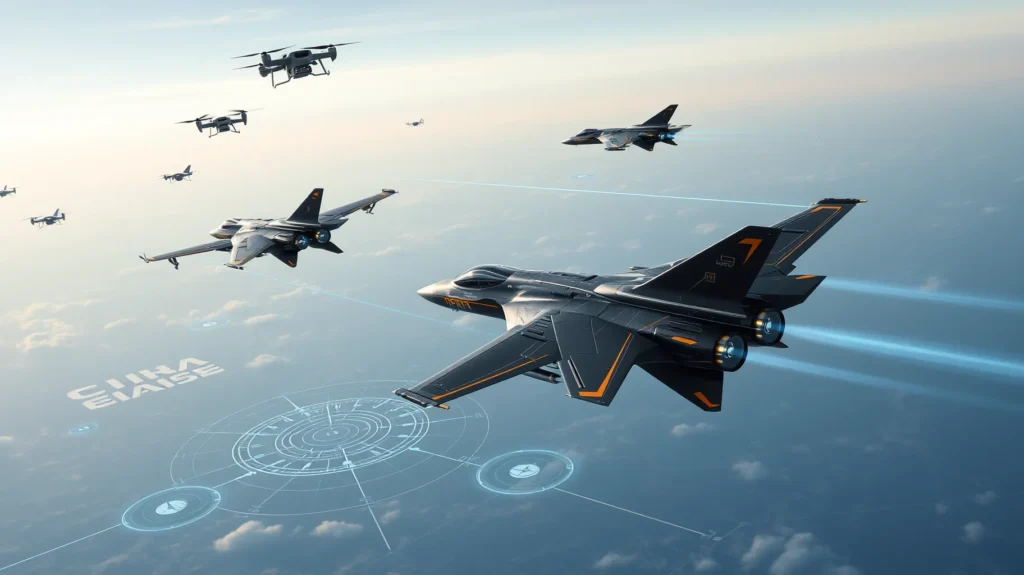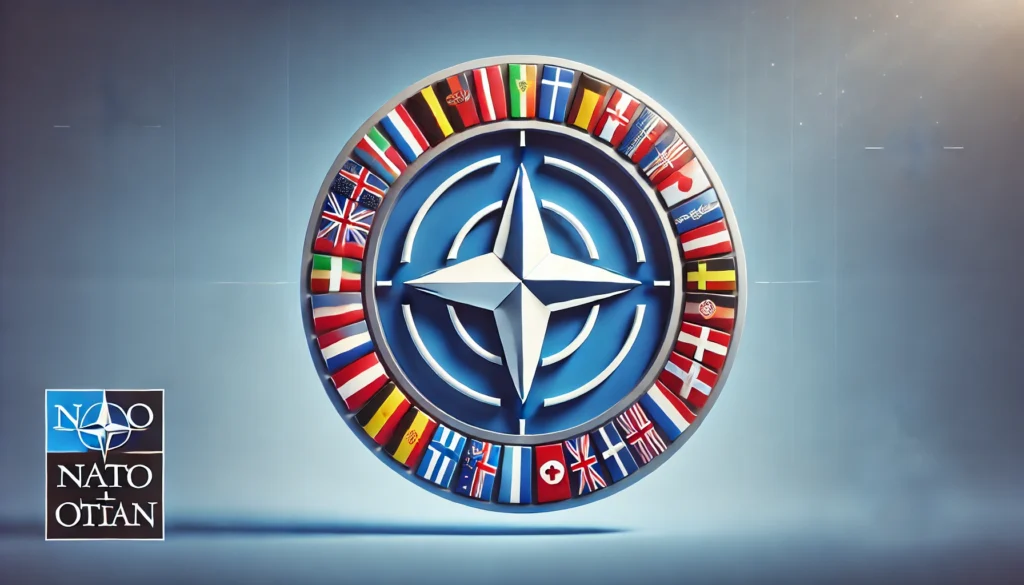
Enter NIPRGPT—the U.S. Air Force’s intriguing new project aimed at exploring the possibilities of ChatGPT-like AI technologies in real-world applications.
Unlike your standard AI chatbot, this venture isn’t focused on casual conversations or streamlining customer service, but rather on enhancing defense capabilities, security, and innovation within non-classified frameworks.
The growing influence of AI in the military sector has sparked a wave of curiosity and speculation. How far will the Air Force go? Could NIPRGPT serve as a blueprint for future AI-based military initiatives? In this article, we’ll dive into the key aspects of the project, exploring its potential to reshape defense strategies and the military landscape as a whole.
NIPRGPT: A Glimpse into the Future of Military AI
At its core, NIPRGPT—which stands for Non-classified Internet Protocol Generative Pre-training Transformer—aims to harness the power of AI for non-classified military applications. By building on models similar to ChatGPT, the Air Force seeks to create an AI system that can assist with a wide variety of tasks, from improving communication protocols to analyzing vast amounts of data more efficiently than ever before. The focus here is not on replacing human intelligence but on augmenting it in meaningful ways.
This isn’t just about pushing buttons and automating simple processes. The Air Force is interested in exploring how AI can play a role in predictive maintenance, decision-making support, and even streamlining logistics. Through NIPRGPT, the Air Force hopes to tap into the machine learning capabilities that have shown remarkable success in the commercial sector, while adapting them to meet the complex, fast-paced demands of military operations.
Leveraging AI for Enhanced Data Analysis
The military relies heavily on vast amounts of data to make informed decisions. In high-stakes situations where speed is critical, the ability to sift through and interpret complex datasets is invaluable. NIPRGPT’s AI-driven data analysis could provide the Air Force with a significant edge by detecting patterns, highlighting key insights, and flagging potential anomalies in real-time. By employing natural language processing (NLP) similar to that found in ChatGPT, NIPRGPT can interact with raw data, producing actionable intelligence faster than any human team could hope to accomplish.
This capability is especially crucial when it comes to cyber defense. In today’s interconnected world, the threats to national security often emerge online, hidden in endless streams of data. By enhancing data parsing and improving cyber surveillance efforts, NIPRGPT may provide a robust layer of protection for the Air Force’s infrastructure and operations.
Communication & Collaboration on a New Level
In addition to data analysis, another exciting frontier for NIPRGPT lies in enhancing communication protocols within the Air Force. The use of AI can streamline internal communication, reduce the burden of administrative tasks, and even facilitate cross-department collaboration. Think of it like having a highly efficient, non-stop operational assistant that can handle routine communications, freeing up personnel to focus on more mission-critical aspects of their roles.
Beyond internal uses, NIPRGPT could bridge the gap in communication between allies and partners. In complex joint operations, seamless information sharing is paramount, and a system that can interpret, translate, and relay essential data across various platforms is a game changer. It’s not about just sending messages but ensuring they are understood and acted upon quickly.
Ethical Considerations in Military AI
Of course, with great power comes great responsibility. One of the key challenges the Air Force faces with NIPRGPT is navigating the ethical and moral implications of using AI in military contexts. How do you ensure that a system designed to enhance decision-making doesn’t overstep its bounds or lead to unintended consequences? While NIPRGPT is currently focused on non-classified applications, these ethical considerations are front and center as the project progresses.
The Air Force will need to address questions related to accountability. For instance, if an AI-driven system flags a potential threat, who is ultimately responsible for the decision to act or not act on that information? Balancing human oversight with AI efficiency will be a crucial factor in determining NIPRGPT’s long-term success and acceptance.
Expanding Capabilities Beyond the Battlefield

While the primary focus of NIPRGPT may lie in its immediate applications within the Air Force, the technology’s potential reach extends beyond traditional military operations. AI’s ability to facilitate humanitarian missions, enhance disaster relief efforts, and improve resource management in times of crisis is immense. By leveraging the predictive and analytical power of AI, military personnel could more effectively coordinate aid during natural disasters, optimize supply chains, and allocate resources to areas of greatest need.
NIPRGPT is about building a versatile tool—not just for the battlefield, but for a wide array of military-related challenges. Whether it’s coordinating international logistics or analyzing satellite imagery in disaster zones, this AI has the potential to be a transformative force.
What NIPRGPT Means for the Future of Military AI
The launch of NIPRGPT signals a significant shift in how the U.S. Air Force is approaching AI integration. It’s no longer a question of if AI will be a central part of military strategy, but how it will be implemented. From improving operational efficiency to bolstering cyber defense, NIPRGPT is poised to act as a testbed for future innovations.
As this technology matures, we could see its influence spread across other branches of the military. Will AI soon become the backbone of joint operations, or could it even revolutionize tactical decision-making on the front lines? With NIPRGPT leading the charge, the possibilities are as vast as they are exciting.
The Broader Implications of AI in the Military
As the U.S. Air Force delves deeper into AI with NIPRGPT, the potential ripple effects on global military operations and strategies are hard to ignore. The integration of AI doesn’t just promise faster, more efficient data processing—it could redefine the very nature of warfare and defense. This is where the conversation gets really interesting. With AI technology rapidly evolving, nations around the world are eyeing similar innovations.
Will NIPRGPT become a standard blueprint for AI-driven defense systems? Could it spark an arms race in AI-based military tech? These are big questions, and the answers could shape global security for decades.
One key area of impact is autonomous systems. While NIPRGPT is focused on non-classified applications, it’s easy to see how this type of technology could feed into more advanced AI systems, such as autonomous drones or robotics. These systems would be capable of gathering and analyzing massive amounts of data, providing military personnel with real-time insights that allow for quicker, more informed decisions. The ability to leverage AI for strategic foresight could alter the dynamics of military power on a global scale.
AI as a Tool for Deterrence and Diplomacy
Beyond the battlefield, AI like NIPRGPT could play a role in diplomatic and strategic deterrence efforts. Imagine AI systems that can predict political movements, anticipate crises, and even assist with complex negotiations. These tools could help military leaders navigate delicate geopolitical situations, avoiding conflict before it even arises.
NIPRGPT could also enhance information warfare capabilities. By identifying and countering disinformation campaigns in real-time, the U.S. military could protect itself and its allies from the growing threat of cyberattacks and propaganda. In this sense, AI isn’t just about offense and defense—it’s about shaping the narrative and maintaining stability in an increasingly digitized world.
Addressing the Risks and Challenges of AI in Military Use
While the benefits of AI in the military are tantalizing, they don’t come without risks. The integration of AI, especially in high-stakes scenarios, brings a host of challenges. One of the most pressing concerns is the issue of AI reliability. Can a system like NIPRGPT be trusted to operate flawlessly in unpredictable environments? And more importantly, what happens when it doesn’t?
There’s also the risk of overreliance on AI. While AI can augment decision-making, there’s always the danger that human operators might become too dependent on these systems, leading to potential blind spots or errors in judgment. AI, after all, is only as good as the data it’s trained on. If that data is flawed or incomplete, the system’s output could lead to misguided actions.
Then there’s the issue of security. AI systems, by their very nature, are susceptible to hacking and cyber manipulation. While NIPRGPT is designed for non-classified operations, its development will undoubtedly influence future classified AI projects. Ensuring that these systems are secure and impervious to external threats will be an ongoing challenge for the Air Force and the military as a whole.
Navigating Ethical Boundaries with AI in Defense
One of the biggest debates surrounding AI in the military involves ethics. AI systems, especially those involved in military decisions, introduce significant moral questions. How do you ensure that an AI makes ethical decisions in life-or-death scenarios? Can machines, programmed with algorithms, adequately balance human morality and military necessity?
Moreover, there’s the question of autonomy. The use of AI in military operations inevitably raises concerns about autonomous weapons systems—machines that can make decisions without direct human oversight. This is a fine line to walk. While NIPRGPT isn’t designed for this, it could eventually lead to AI systems that do make critical, real-time decisions. As military AI capabilities expand, ethical frameworks must evolve alongside them.
Preparing the Workforce for an AI-Driven Military
As NIPRGPT and similar AI projects gain traction, there will be a growing need to train and prepare military personnel to work alongside these technologies. This isn’t just about teaching people how to use AI; it’s about creating a culture that embraces innovation while maintaining human oversight. Military leaders, engineers, and frontline personnel will need to be educated on how to interact with and oversee AI-driven processes.
Incorporating AI into military training programs will be critical. The Air Force and other branches will need to invest in programs that teach personnel not just the technical aspects of AI, but also the strategic implications of its use. Understanding how to leverage AI effectively—and where its limitations lie—will be crucial for the future of the U.S. military.
How NIPRGPT Could Influence Broader AI Policy
The development of NIPRGPT isn’t happening in a vacuum. As AI becomes more integrated into military operations, the U.S. government will need to consider new policies and regulations to ensure that these technologies are used responsibly. This could involve updates to existing defense policies, new ethical guidelines, and even international treaties designed to limit the proliferation of AI-driven weaponry.
NIPRGPT could serve as a case study for the broader implementation of AI in defense, offering valuable lessons about how to balance innovation with accountability. As the Air Force continues to explore the capabilities of AI, it will need to work closely with policymakers, scientists, and ethicists to ensure that this technology is used in ways that protect national security without sacrificing moral standards.
The Global Response: What Other Nations Are Doing
The U.S. isn’t the only country exploring AI’s potential in the military. Nations like China and Russia are also investing heavily in AI research and development. In fact, some experts suggest that AI could become the new arms race of the 21st century, with countries vying for dominance in this cutting-edge technology. The development of NIPRGPT puts the U.S. Air Force on the leading edge of this global push for AI supremacy, but it also highlights the need for international collaboration and regulation.
How other nations react to the rise of AI-driven military tools like NIPRGPT could shape global security for years to come. Will AI lead to escalation and competition, or can it be harnessed for peacekeeping and stability? These are questions that military leaders and diplomats around the world will need to confront as AI technology continues to advance.
Conclusion: A New Era of Military AI
NIPRGPT marks a bold step forward in the Air Force’s exploration of AI technology. By developing an AI system that enhances data analysis, communication, and decision-making, the U.S. military is setting the stage for a future where AI plays a central role in defense strategy. While there are still many challenges to address—ethical concerns, security risks, and the need for human oversight—NIPRGPT demonstrates that the potential benefits of AI in defense are vast.
As the project continues to evolve, it will not only impact the Air Force but could also influence military strategies around the world. With the right balance of innovation and responsibility, NIPRGPT could help usher in a new era of intelligent defense systems that keep the world safer and more secure.
In the coming years, as AI technology matures, NIPRGPT may be remembered as the project that laid the foundation for the future of military AI.
References and Resources
- U.S. Air Force and AI Integration
U.S. Air Force is actively integrating AI technologies for military and operational purposes. To learn more about the Air Force’s efforts in AI, you can explore official publications and updates directly from the Air Force’s website or their press releases:
U.S. Air Force Newsroom - AI in Military Operations: Benefits and Risks
For a deeper dive into the applications of AI in military contexts, this report from the Center for Strategic and International Studies (CSIS) offers insight into both the potential and the risks associated with integrating AI into defense strategies:
CSIS AI in Military Operations - Ethics of AI in Defense
The ethical implications of AI in military operations are complex and multifaceted. The Brookings Institution provides comprehensive discussions on the ethical boundaries of AI in warfare:
Brookings: Ethical AI in Warfare - Global Military AI Race
With China and Russia also heavily investing in AI for military purposes, the Carnegie Endowment for International Peace offers a global perspective on the AI arms race:
Carnegie: AI Arms Race - AI Policy and Regulation in Defense
The RAND Corporation provides detailed reports on the current policies surrounding AI integration in the military and offers policy recommendations for the future of AI in defense:
RAND: AI Policy in Defense - Department of Defense (DoD) AI Strategy
The Department of Defense has been actively pursuing AI initiatives. Their official AI strategy outlines goals, objectives, and frameworks for integrating AI technologies into defense:
Department of Defense AI Strategy




